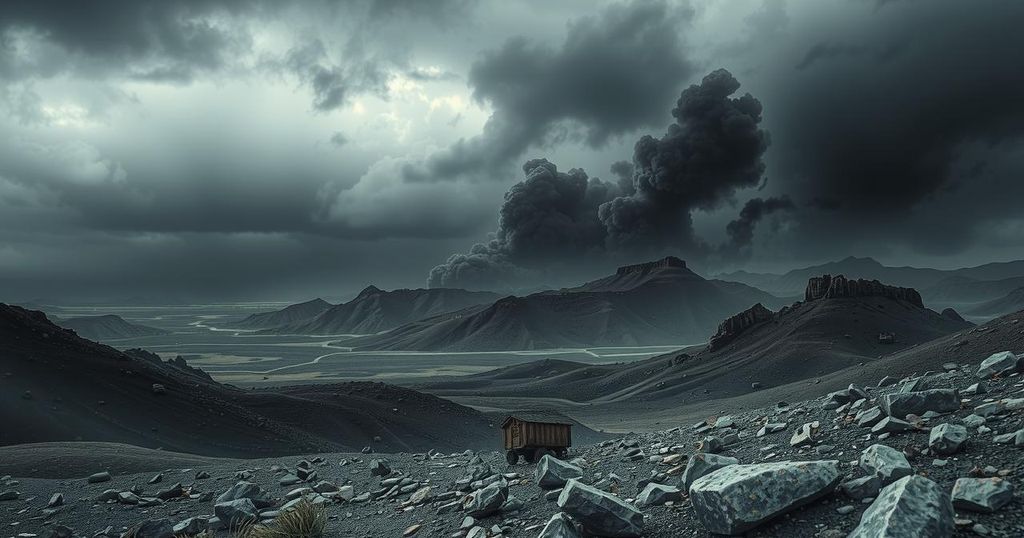The M23 militia, backed by Rwanda, has taken control of key cities in eastern DRC, prompting concerns of escalating regional conflict. The resurgence of M23 highlights Rwanda’s interests in security and resources. President Tshisekedi struggles to maintain control amid rising tensions and humanitarian crises, with neighboring countries also involved. Increased international pressure is essential to mitigate the crisis.
In late January and early February, the M23 militia seized control of Goma and Bukavu, pivotal cities in the eastern Democratic Republic of Congo (DRC). The Rwandan-backed group now governs extensive territory, which they are developing into a local administration, indicating their determination to reshape the geopolitical landscape of Africa’s Great Lakes area.
The M23 rebellion first occurred in 2012 but was suppressed in 2013 due to international pressure on Rwanda. Initially claiming to protect the Rwandophone community within Congo, M23’s ambitions align closely with Rwanda’s regional interests. The formation of the Alliance du Fleuve Congo (AFC), a political arm of M23, signals a larger agenda of regime change in Kinshasa.
M23 resurfaced in November 2021, partly due to the Congolese government’s failure to fulfill commitments to integrate militia veterans and due to Rwanda’s concerns over its regional interests. Rwanda perceives the Democratic Front for the Liberation of Rwanda (FDLR), remnants of Hutu genocide perpetrators, as a significant security threat. Additionally, Rwanda’s economic interests, particularly in gold mining from eastern DRC, further motivate their involvement.
Rwanda feels compelled to reactivate the M23 as neighboring Uganda and Burundi intensify military actions against their own DRC-based insurgencies. The Rwandan elite have long expressed doubts about Kinshasa’s ability to govern eastern DRC, advocating for a buffer zone that M23 is helping to establish. It has been reported that between 4,000 and 7,000 Rwandan troops were present in the DRC by late last year, a number that likely increased following the capture of Goma and Bukavu.
M23’s offensive has resulted in a profound humanitarian crisis, displacing three million individuals and causing thousands of casualties. Additionally, a public health disaster is imminent, and the potential for escalating regional conflict has grown significantly. Burundians express rising fears regarding a possible war with Rwanda, with each side accusing the other of supporting insurgents against their governments. Recently, tensions have escalated, prompting President Évariste Ndayishimiye to prepare his nation for war against Rwanda.
Uganda’s role in the conflict is characterized by both support and competition with M23. While the U.N. indicates Uganda’s assistance to M23, Uganda’s military presence in eastern DRC has simultaneously increased. This duality suggests both nations are pursuing territorial claims amidst the conflict.
President Felix Tshisekedi’s administration appears to be losing control over the region, with reports of low morale among Congolese soldiers spurring doubts about their effectiveness. The withdrawal of Burundian forces undermined Tshisekedi’s military strategy, exacerbating the situation as M23 advances south toward resource-rich Katanga. Local sentiments in these regions complicate the dynamics, with some residents harboring resentment towards the Tshisekedi government rather than aligning exclusively with M23 or Rwanda.
The potential for escalating violence is further supported by rising ethnic tensions and the spread of rumors within DRC, echoing situations that presaged previous conflicts. Additionally, the ongoing strife below the surface bears a chilling resemblance to the early stages of the Second Congolese War.
The imposition of international pressure on Rwanda was crucial in resolving the M23 conflict in 2013. Presently, President Tshisekedi seeks to revive such pressures, albeit with little measurable success. His pleas for military assistance in exchange for access to DRC’s mineral wealth have been poorly coordinated and vague, undermining their effectiveness.
While recent U.S. actions against key Rwandan figures signal progress, lasting change in Rwanda’s support for M23 will necessitate more substantial pressure. The window for international intervention is rapidly closing, with M23 and Rwanda solidifying their foothold in eastern DRC, indicating a dire potential for further conflict in the Great Lakes region.
In summary, the M23 militia’s resurgence in eastern DRC, supported by Rwanda, has significantly destabilized the region, leading to a humanitarian crisis and escalating tensions among neighboring nations. President Tshisekedi’s attempts to regain control are hindered by rising discontent and a lack of sufficient international support. The situation demands urgent attention to prevent further deterioration and potential regional conflict.
Original Source: responsiblestatecraft.org




